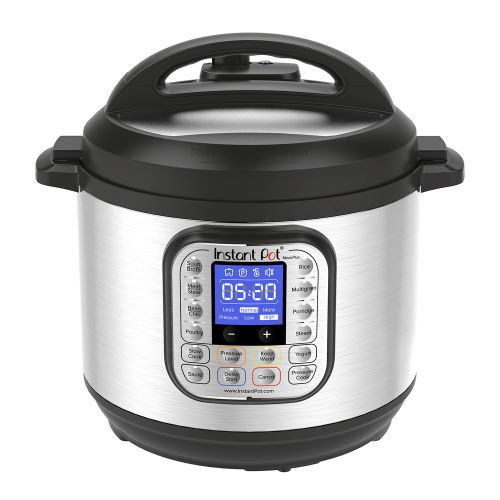With the exception of raw vegans, most of us eat cooked foods. Heat can destroy nutrients; but sometimes it will softening food tissue making the nutrition more bio-available. Research shows that cooking definitely changes the nutrient and antioxidant values of foods, so what is the best way to cook our foods to preserve as much nutrition as possible?
Looking at nutrition values of foods that are raw, steamed, microwaved, boiled; steaming is considered the best cooking method to preserve nutrition because food’s not water-dunked enabling leaching of nutrients in water nor cooked at excessive temperatures causing negative chemical changes. Microwaving came in second previously. But with new cooking technologies and tools (like the instant pot – pressure cooker), we have to consider if this beats steaming.
So for most food, the longer you cook it, the more antioxidants you can lose. So if you can cook food faster without higher temperatures, theoretically you can preserve the most antioxidants.
- With dried beans/legumes, it’s a no-brainer. Studies show the antioxidant levels of black beans, for example, are 6 times higher for pressure cooking 15 minutes vs. boiling for 1 hour. 3 of 17 amino acids (lysine, cysteine, and arginine) were significantly reduced.
- With vegetables, research showed that cooking did not significantly decrease the phytonutrient content, and it generally increases antioxidant values. Sautéing and pressure-cooking had the strongest values and so similar that they tie for first place, followed closely by boiling. With vegetables however, there was a significant loss of certain amino acids by pressure-cooking vs. blanching. Two out of 17 amino acids (lysine & arginine) were generally reduced in the vegetables.
- With greens, pressure cooking is the best overall, with steaming at #2 with higher ORAC than boiling. How does one pressure cook greens and still have something to eat when it’s all over? Michael Greger’s method to put a layer of water down at the bottom of an electric pressure cooker, drop in a metal steaming basket on top, and then put the greens in and steam under pressure for zero minutes so it shuts off as soon as it reaches the cooking pressure. Then quick release valve it immediately to release the steam. Voila! The greens turn out perfect—bright & tender.
In summary, the instant pot is gaining fame among most health practitioners as a preferred method of cooking plant-based proteins, vegetables, and greens. The only negative thing I found was a decrease of a few amino acids, of which lysine es the only essential amino acid. Lysine is important for supporting a healthy immune system and for boosting athletic performance. Animal-proteins are the well-known sources but since most cooking methods will decrease the value of it, we’ll look at plant-based foods that we may not have to cook. Lysine can be found in dried apricots, avocados, mangoes, beets, leeks, tomatoes, pears, green & red peppers, soy milk, pumpkin seeds, pistachios, cashews, macadamia nuts, yogurt, cheese, butter, and milk.
My life with an instant pot began about a year ago, and it’s been bliss ever since. It’s great for cooking dried beans, lentils, dals, legumes, grains like rice or quinoa, or cultures like yogurts, or soups, or one-dish meals. The best bit is that you can schedule when it should cook your food, so if you’re going to be gone all day, you can fill it and schedule when it should start/finish.



